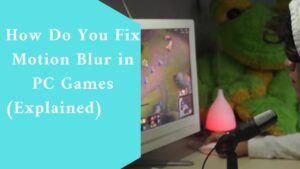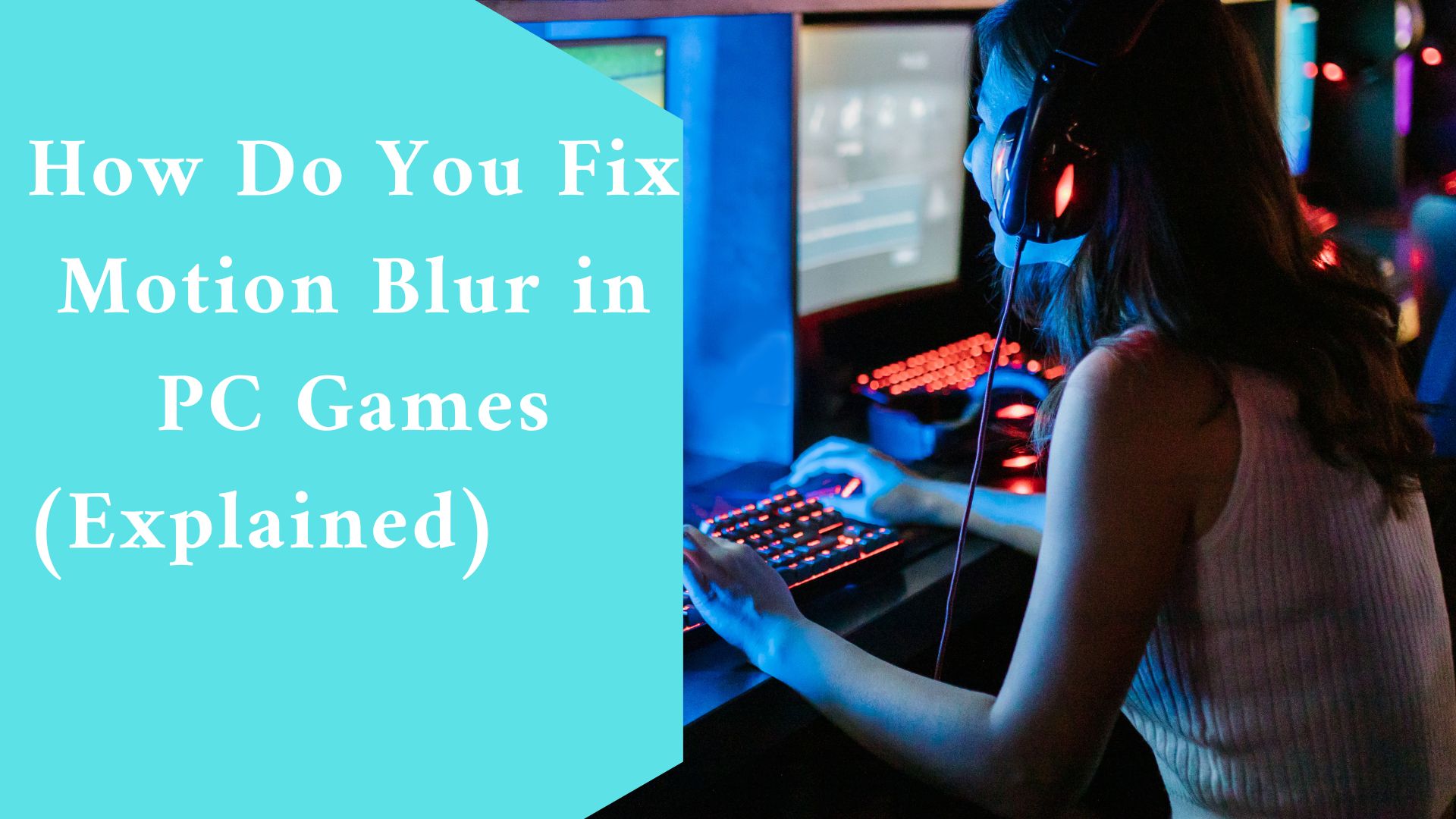A current game operating at high quality with sharp, crisp graphics is very gratifying.
However, if the scene becomes a smeared mess every time you move your character, you’re seeing a phenomenon known as motion blur.
Motion blur can be caused by a variety of factors, and if you’re lucky, your monitor may include a few choices for decreasing it.
While a few software tweaks may help you reduce motion blur, many solutions are reliant on your display the better your monitor, the more blur-reducing options you’ll have.
Gaming monitors will typically include more of these tweaks than business monitors, but it never hurts to double-check.
If you’re unsure how to access your monitor’s on-screen display (OSD), consult the handbook.
To explore the onboard settings, typically push a button on the side or bottom of the monitor. Here are a few alternatives you might come across.
How Do You Fix Motion Blur in PC Games
- You can try to Increase the Refresh Rate
- Increase the frame rate of your game.
- Turn Off Your Game’s Motion Blur Setting
- Overdrive and Motion Blur Reduction should be enabled.
-
Increase the Refresh Rate
The refresh rate of an LCD monitor regulates how frequently the display refreshes the image on the screen.
The majority of computer monitors refresh at 60Hz, or 60 times per second. Many monitors, particularly gaming monitors, may run at 90Hz, 144Hz, or even higher. The same may be stated about gaming laptop screens.
Here’s why this is significant: Moving elements on a sample-and-hold display, such as an LCD, do not move in the way your eyes expect them to.
They appear in one location for 1/60th of a second, then move to another location for another 1/60th of a second, and so on.
As your eye follows the object across the screen, expecting smooth motion, your brain adds some blur.
(If you want to delve deeper, Blur Busters has a wonderful explainer(Opens in a new window) of this quirk.)
You can reduce blur by increasing the number of frames presented per second (but it won’t eradicate it).
With a greater refresh rate, each image on the screen remains on the screen for a shorter time before transitioning to its next place.
To do this, you’ll need a monitor with a higher refresh rate, as well as the ability to enable that refresh rate in Windows.
This may appear apparent, but every week I hear about another gamer who purchased a 144Hz display and didn’t notice a difference because they neglected to enable that refresh rate in Windows.
If you have a high refresh gaming display, go to Settings > System > Display, scroll down to Advanced Display Settings, and then select Display Adapter Properties for [your monitor].
-
Increase the frame rate of your game.
The fact that your screen can refresh at 144Hz does not imply that you will see 144 frames per second; it just indicates that your monitor is capable of displaying that many unique frames.
The second half of the equation is your computer’s ability to generate frames at that rate.
To operate smoothly, modern games require a more powerful CPU and GPU, especially at higher resolutions like 1440p or 4K.
So launch your current game and count how many frames per second you’re getting.
If you’re only receiving 67 frames per second on a 144Hz monitor or worse, 30fps on a 60Hz monitor you’ll likely still have motion blur, and you should adjust some of your game’s graphical settings to get more frames.
High settings can still look fantastic while being far less severe than Ultra, allowing for faster, clearer gameplay.
(However, don’t set the resolution too low, since this can cause your game to blur for a variety of reasons.)
For the smoothest action on that display, your game’s frame rate should be as high as or greater than your monitor’s refresh rate.
So, on a 60Hz panel, aim for 60fps or above, 144fps on a 144Hz display, and so on.
-
Turn Off Your Game’s Motion Blur Setting
You should also look for the Motion Blur setting in your game. This is often used in games to compensate for low frame rates or to make the game more “cinematic.”
However, depending on how it is implemented(Opens in a new window), this feature has the potential to make problems worse.
If you don’t like how your game’s motion blur appears, try turning it down or off in the in-game options.
Certain games may also have more complex settings that you may want to tweak. Experiment with the Depth of Field, Bloom, Film Grain, and Chromatic Aberration settings, which may cause similarly irritating effects if you like a clear image.

-
Overdrive and Motion Blur Reduction should be enabled.
Another reason motion may appear blurry on your monitor is response time. The response time of a monitor, measured in milliseconds, influences how rapidly a pixel can shift from one shade to another.
This is not to be confused with input lag (the delay between hitting a button and the action displaying on screen).
If the transition is too sluggish, moving pictures will leave a smeared trail, which is known as ghosting. Even if your display has a high refresh rate, this can occur.
Certain panel types are more prone to ghosting and poor response times than others.
TN panels have faster response times than IPS and VA panels, but within any category, certain panels perform better than others.
Even more perplexing, the reaction time value(Which opens in a new window) displayed on a monitor’s spec page may be deceptive even if a monitor claims a 1ms response time, it may exhibit significant ghosting.
Don’t rely on the statistics on the box; instead, read monitor evaluations from professionals like us to learn how well a display handles motion.
To reduce ghosting, gaming monitors frequently include an Overdrive or Response Time setting. Look at your screen to see what’s available.
Turning this feature on reduces ghosting, while turning it off causes pixel transitions to overshoot the target shade, resulting in inverted ghosting distortions (Opens in a new window).
The second-highest option is typically a decent balance for me, although it depends on the display.
If you’re unsure, run the Blur Busters ghosting test (Which opens in a new window) and experiment with different settings to discover which looks best.
In addition to the overdrive setting, there may be a motion blur reduction setting.
LightBoost, Ultra Low Motion Blur (ULMB), Dynamic Accuracy (DyAc), Extreme Low Motion Blur (ELMB), or Motion Pixel Response Time are all terms for this (MPRT).
These features strobe the illumination in such a way that motion blur is reduced or eliminated, albeit some implementations are better than others.
It can also generate horrible artifacts and image doubling(Opens in a new window), so give it a shot and see how it works with your display.
Final thought
Again, these functions are more likely to be found on gaming-focused displays than on the low-cost business display you purchased.
If you value smooth and clear motion, seek features such as high refresh rates and motion blur reduction when upgrading your monitor.
Related Article:
What Causes PC Motherboard Short Circuits & How to Fix them (Explained)

